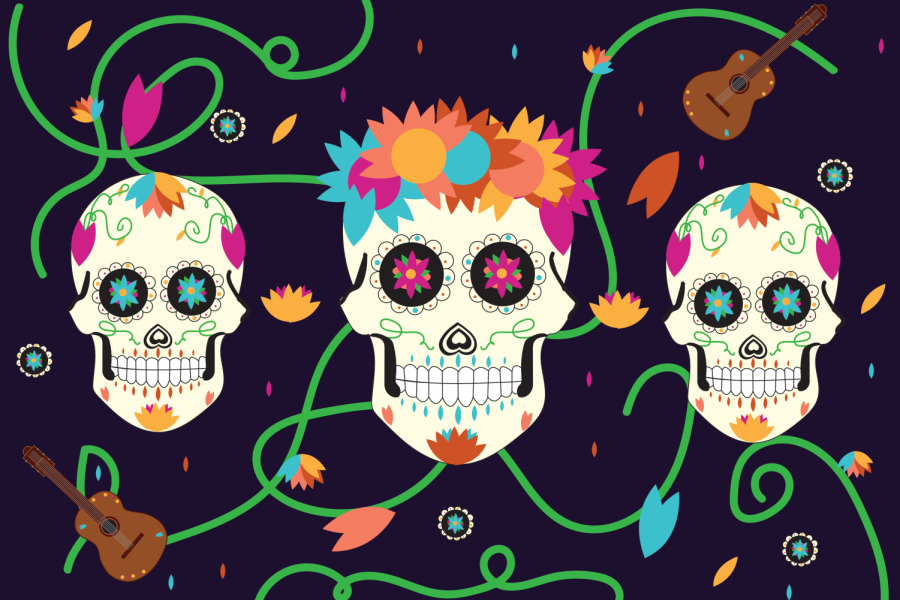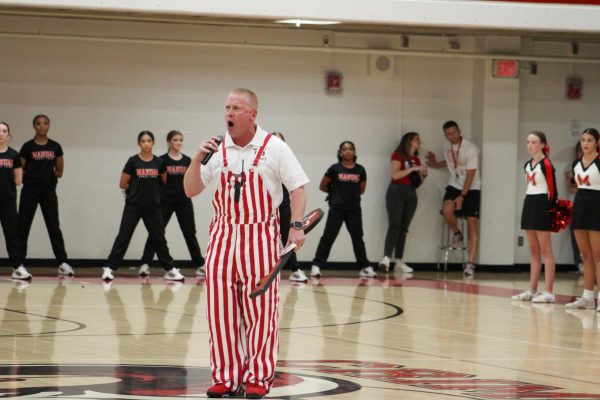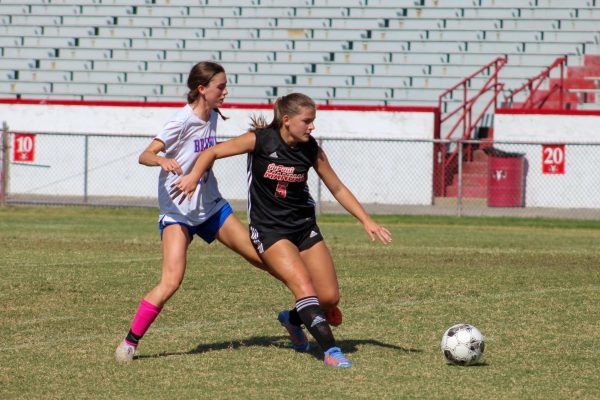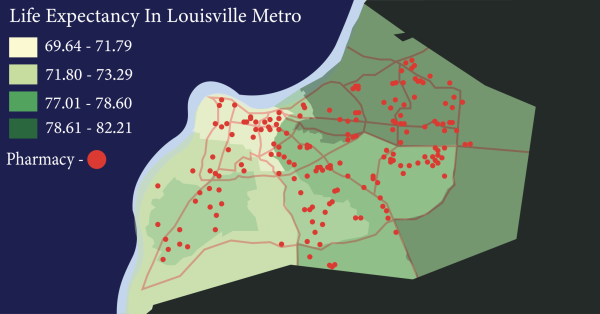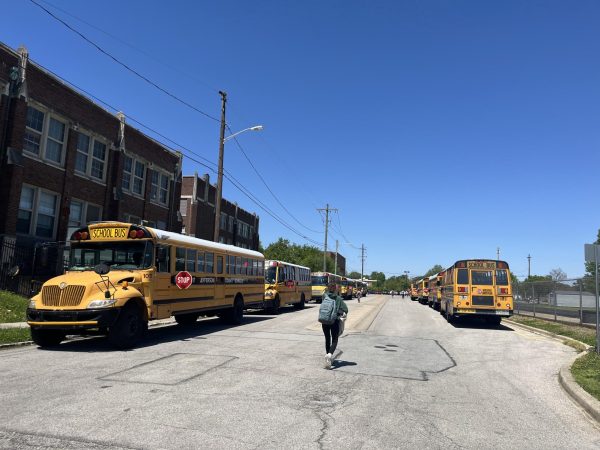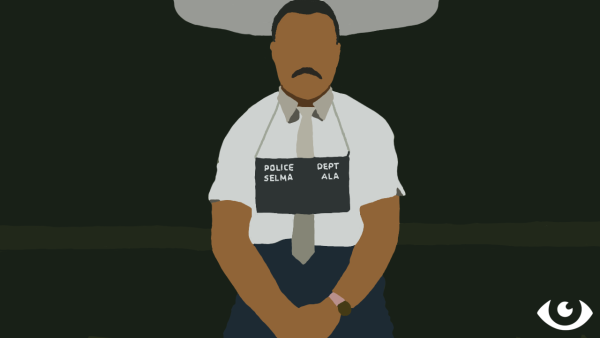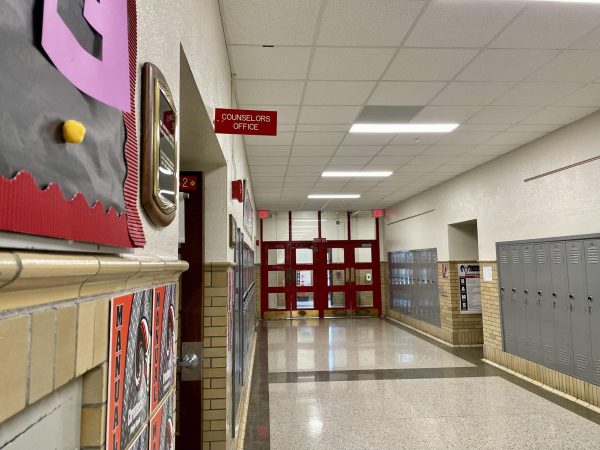OPINION: The exclusion of Afro-Mexican students during Cinco de Mayo
Afro Latina students share their experience with colorism and the lack of social acceptance within the Mexican community.
May 10, 2021
A day of commemoration and celebration of a single battle led to momentous strides for Mexican communities to unify under ideals, traditions and even classes that once separated them. The Battle of Puebla in 1862 was the result of financial struggles within the Mexican government during the early 1860s. Due to Mexico’s lack of financial stability during this time, more powerful and wealthier countries arrived on Mexican shores in Veracruz for debts they had wished to be paid.
Less than 2,000 Mexican soldiers fought against naval forces from France, Spain and Britain in hopes of protecting their homes. With American efforts, Mexico was supported with more artillery and military weapons which later pushed the French to withdraw. A battle lasting less than 24 hours resulted in about 500 lost soldiers and a celebratory day that became stamped into history as Cinco de Mayo.
May 5, 1862 highlighted how Mexican and American allyship helped rally the strength to hold solid in the face of uncertainty. This day of honor is celebrated and recognized mostly in the United States and Mexico due to its relevance in the area and the communities that were derived from this battle.
Rather than choosing to indulge in the sadness of loss, Mexican communities host large parades and festivals to recognize the courage and bravery of those who fought for their home. Families gather in their neighborhoods to listen to Norteno or Mariachi as men, women, and children dance Jarabe Tapatio or Danza del Venado.
If people aren’t up on their feet dancing, many are running their own food stands to sell mole poblano, cheesy chicken tostadas, enchiladas, shrimp ceviche, or spicy twists on guacamole and chips.
Each of these recipes tie back to ancient Aztec rituals and religious traditions about the prosperity of harvest.
In addition to selling food, many vendors sell jewelry, painted art, handbags, and sculptures with beading, bright colors, or shiny ribbon that blows in the wind.
Even if participants don’t dance or purchase anything, the atmosphere is what keeps them coming back. The aroma, the colors of Mexican hope, flowers, laughter and the sound of Mexican pride make people feel at home.
Similar to every event during the pandemic, groups have had to monitor the size and capacity of these gatherings as a safety precaution to prevent the spread of COVID-19.
The minimization of the physical gathering hasn’t deterred Mexican communities from honoring this day or disregarding the importance of this unity.
Like many cultures, Mexico is diverse in its music, food, customs and people. However, this diversity is often neglected within Mexican communities. Many families of these Mexican communities are of African descent. Afro-Mexican communities began to form in the early 1900s due to the increasing number of African slaves brought to slave ports in Veracruz during 1810. These connections to both Africa and Mexico made it hard for many Afro-Mexicans to identify with a specific community and later gain acceptance.
Throughout history, people of color have been constant targets in violence as a way to diminish and dehumanize their existence as people. Black and Latin people are at the bottom of the totem pole for privileges and rights for the same work and value as White counterparts. Even though both populations are growing in presence and attacked by daily oppression, these communities often don’t align in solidarity. As minority groups fight for power, voice and respect, each group begins to fight for its own.
Most recently following the deaths of Breonna Taylor and George Floyd, Black and Mexican communities on the West Coast have worked arm in arm to lead rallies, plan protests and even supply families with resources through this period of trauma and loss.
Though this solidarity has shown in a time of need, there are still many parts of the world where this bond is non-existent.
This non-existence makes celebrations like Cinco de Mayo seem foreign to those of Afro-Mexican communities.
An unfamiliarity that makes it harder to feel unified, wanted or even accepted into a sense of belonging.
“Cinco de Mayo is fun when you’re Mexican. At least fully anyway. When you’re Black wearing a red and green skirt with flowers in your hair, people assume you’re a kid from the block down the street,” said Butler Traditional High School student Adriana Vidal.
“Schools try to embrace Cinco de Mayo in our Spanish classes to learn about the history and enjoy the day. Every student in the class has the opportunity to have fun as a group but, it’s not always like that in reality,” said Moore Traditional School student Sebastián Garcia.
As students from schools within JCPS share their own experiences with the celebration, many address separatism and colorism within Mexican communities that makes the struggles with identity perplexing and strenuous for Afro-Mexican students.
“Being Black is already a world in itself. From the way you watch yourself in white neighborhoods and around the police to the way you switch up your slang in front of teachers, life is just a bunch of hoops. The hoops don’t get any easier just because you speak Spanish. It’s easy to get lost,” Garcia said.
“Cinco de Mayo makes me feel like I’m celebrating their liberation as a tourist. Even though I’m Mexican, sometimes it feels wrong and out of place,” said Moore Traditional Schools student Myá Muñoz.
These experiences with social acceptance have made making friends, connections or even mutual respect a burden.
“Not feeling Black or Mexican enough just adds to feeling like nothing to be honest. There isn’t a group you feel more comfortable in so you’re forced to make your own,” Muñoz said.
“The way people are so surprised when they hear a Black person speak Spanish makes you want to laugh and cry at the same time. It’s almost like feeling like the butt of every joke,” Garcia said.
In culmination with identity crises and a lack of local community acceptance, schools within JCPS do not welcome differences with open arms. From the history taught in the classroom to interactions with faculty, Afro-Latinx students become invisible.
“Yes, we are Black and Mexican or Black and Latina. We deserve much more than a sentence in our textbooks because there are thousands of us that exist. We swallowed into oppression from both directions,” Vidal said.
“Most teachers just assume I’m Black which is true but, that’s not all. That’s all they see as. It’s like faculty just decide to understand based on what they see. Or they’ll bring it up everytime they see you. ‘Oh, I read this article today about Día de Los Muertos and thought about you’. Ma’am that’s not a compliment,” Muñoz said.
“It’s hard for teachers to comprehend like you can’t be part of two minority groups. That’s just too much diversity ya’know,” Garcia said.
The pressures applied from school, home and other settings to be one or the other highlights larger degrees of separation and racism within minority groups.
The experiences of lighter Mexicans to darker Mexicans depict differences in value and favor. The lighter complexions are valued as more important than the darker groups as seen with colorism in Black and Asian groups.
These continued differences and blocks on the community make the feeling of being whole seem like a distant memory in the age of the Battle of Puebla.
For many Afro-Mexican students, Cinco de Mayo is representative of much progress that still needs to occur for communal solidarity.


